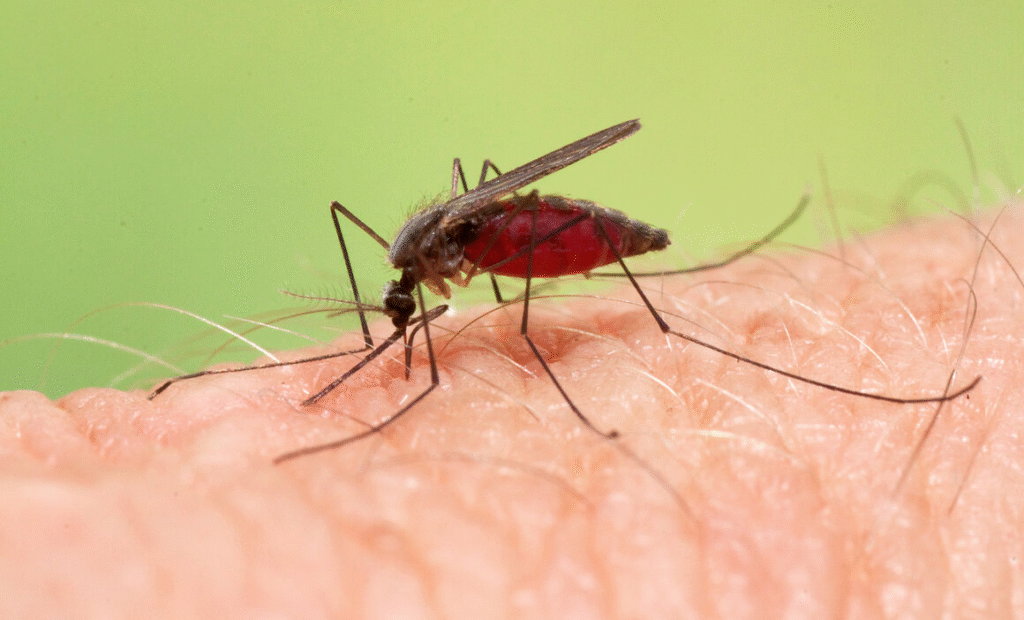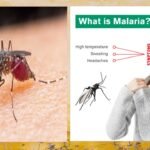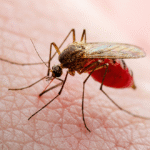Introduction: 🦟What Is a Malaria Mosquito?
Malaria is one of the most serious and widespread infectious diseases in the world. At the heart of this deadly disease is a tiny yet dangerous vector — the malaria mosquito. The term specifically refers to the female Anopheles mosquito, which is responsible for transmitting the malaria-causing Plasmodium parasites into the human bloodstream.
This comprehensive blog explores everything about malaria mosquitoes — their species, lifecycle, behavior, how they transmit malaria, and most importantly, how to prevent mosquito bites and stop the spread of malaria. Whether you’re a health enthusiast, a traveler, a student, or a researcher, this guide will give you all the vital knowledge in an SEO-friendly and reader-engaging format.

*****************************************************************************************************
🌍 1. What Is a Malaria Mosquito?
The malaria mosquito is not just any mosquito. It specifically refers to the female Anopheles species that are capable of carrying and transmitting the Plasmodium parasite. When this mosquito bites a human, it can inject the parasite directly into the bloodstream, initiating the infection process.
*****************************************************************************************************
🧬 2. How Does the Malaria Mosquito Transmit the Disease?
The female Anopheles mosquito becomes infected with Plasmodium parasites when it feeds on the blood of a person who already has malaria. The parasites undergo part of their lifecycle in the mosquito’s gut. After several days, they migrate to the mosquito’s salivary glands.
When the mosquito bites another person, it injects the parasite into the bloodstream through its saliva. These parasites then travel to the liver, where they multiply and later infect red blood cells — causing malaria symptoms.
**********************************************************************************************************************************************************************************************************
🦟 3. Characteristics of the Female Anopheles Mosquito
The female Anopheles mosquito has several unique features:
- Resting position: Body rests at a 45-degree angle
- Feeding time: Mostly at night or dawn
- Wings: Have dark and light spots
- Lifespan: About 1–2 weeks, but enough to infect many people
- Habitat: Prefer clean, stagnant water to lay eggs
Only female mosquitoes bite humans because they need blood to develop eggs. Males feed on nectar and plant juices only.

****************************************************************************************************
🧫 4. Types of Malaria-Causing Parasites
The malaria mosquito spreads five types of Plasmodium parasites:
- Plasmodium falciparum – Most severe and fatal
- Plasmodium vivax – Causes relapsing malaria
- Plasmodium ovale – Also causes relapse
- Plasmodium malariae – Milder but long-lasting
- Plasmodium knowlesi – Zoonotic, from macaques

***************************************************************************************************
🔁 5. Lifecycle of a Malaria Mosquito
a. Egg Stage
Laid on the surface of water, eggs hatch within 1–2 days.
b. Larva Stage
Larvae live in water and breathe air through tubes. This stage lasts 4–14 days.
c. Pupa Stage
Mosquito pupae float at the surface. They don’t eat but respond to light. This stage lasts 2–3 days.
d. Adult Stage
Emerges from the pupa and rests until its body hardens. Females then search for a blood meal to lay eggs.
🏞️ 6. Where Do Malaria Mosquitoes Live?
Anopheles mosquitoes prefer:
- Tropical and subtropical regions
- Clean, stagnant water sources
- Shady, cool areas to rest during the day
They’re commonly found near:
- Rice paddies
- Marshes
- Slow-moving rivers
- Water tanks or containers
*****************************************************************************************************
🌙 7. Biting Behavior and Time
- Active from dusk to dawn
- Bites are painless, so many people don’t notice until symptoms start
- Bites mostly on exposed skin, such as arms, legs, face
*****************************************************************************************************
⚠️ 8. Symptoms After a Malaria Mosquito Bite
Symptoms of malaria typically appear 7-30 days after a mosquito bite, but can sometimes take up to a year to develop. Here are the common symptoms to look out for:
- Fever and Chills: High temperature, sweats, and shaking chills are common symptoms of malaria.
- Flu-like Symptoms: Headache, muscle aches, and tiredness are similar to flu symptoms.
- Gastrointestinal Issues: Nausea, vomiting, and diarrhea may occur.
- Anemia and Jaundice: Malaria can cause anemia and jaundice (yellowing of the skin and eyes) due to the loss of red blood cells.
- Other Symptoms: Lack of appetite, muscle aches, and abdominal discomfort can also occur.
Severe Cases:
- Cerebral Malaria: Malaria can affect the brain, causing swelling, seizures, or coma.
- Organ Failure: Malaria can cause liver failure, kidney failure, and respiratory distress.
- Severe Anemia: Destruction of red blood cells can lead to severe anemia, causing drowsiness, weakness, and fainting ¹ ² ³.
When to Seek Medical Attention:
If you’re experiencing any of these symptoms after a mosquito bite, especially if you’ve traveled to areas with high malaria risk, seek medical attention immediately. Malaria can become life-threatening if not treated promptly ¹.
*****************************************************************************************************
🆚 9. Differences Between Malaria Mosquito and Other Mosquitoes
| Feature | Malaria Mosquito (Anopheles) | Dengue Mosquito (Aedes) | Culex Mosquito |
|---|---|---|---|
| Biting time | Night (dusk to dawn) | Daytime | Night |
| Resting position | 45-degree angle | Horizontal | Horizontal |
| Disease spread | Malaria | Dengue, Zika, Chikungunya | Encephalitis |
| Preferred water source | Clean, stagnant water | Clean water in containers | Dirty water |
🔎 10. How to Identify Malaria Mosquitoes
Look for:
- Resting at an angle
- Spotted wings
- Biting at night
- Found near stagnant clean water
Use mosquito traps or consult vector control departments for accurate identification.
*****************************************************************************************************
🌐 11. Malaria-Endemic Regions and Global Spread
Malaria mosquitoes are most common in:
- Sub-Saharan Africa (over 90% cases)
- South Asia (India, Bangladesh, Pakistan)
- Southeast Asia (Indonesia, Myanmar, Philippines)
- South America (Brazil, Peru, Venezuela)
According to WHO, over 247 million cases of malaria were reported globally in 2023.
*********************************************************************************************
🌦️ 12. Climate and Environmental Factors
Malaria mosquito population is influenced by:
- Temperature – Parasites mature faster at 20–30°C
- Rainfall – Creates more breeding sites
- Humidity – Helps mosquitoes survive longer
Climate change is expanding malaria risk areas globally.
*****************************************************************************************************
🛑 13. Malaria Mosquito Control Measures
Environmental:
- Eliminate standing water
- Cover water tanks
- Introduce mosquito-eating fish in ponds
Chemical:
- Insecticide spraying
- Larvicides in breeding grounds
Biological:
- Bacterial larvicides (e.g., Bacillus thuringiensis)
- Genetically modified mosquitoes
🧍 14. Personal Protection and Prevention Tips
- Use mosquito nets while sleeping
- Apply repellents with DEET or picaridin
- Wear long-sleeved clothing
- Install window screens
- Use mosquito coils or electric vaporizers
- Travel with malaria prophylaxis medicines in endemic areas
**********************************************************************************************************************************************************************************************************
🏛️ 15. Government and Global Strategies
- WHO’s Global Technical Strategy for Malaria 2016–2030
- Distribution of long-lasting insecticidal nets (LLINs)
- Indoor residual spraying (IRS)
- Free diagnosis and treatment programs
- Malaria vaccine deployment in pilot countries (RTS,S/AS01)
🧪 16. Future Research and Innovation
Scientists are exploring:
- Gene editing (CRISPR) to sterilize mosquitoes
- New malaria vaccines
- Mobile apps for tracking mosquito populations
- AI and satellite data to predict outbreaks
❓ 17. Frequently Asked Questions
Q1. Can all mosquitoes spread malaria?
Only female Anopheles mosquitoes can transmit malaria.
Q2. How many people die from malaria annually?
Over 600,000 deaths were reported worldwide in 2023, mostly children under 5.
Q3. Is malaria mosquito bite always dangerous?
Not always. The mosquito must be infected with Plasmodium parasites to transmit malaria.
Q4. Can malaria spread through food or water?
No, only through mosquito bites or blood transfusions from infected individuals.
📝 18. Final Thoughts
The malaria mosquito might be tiny, but its impact is enormous. By understanding the biology, behavior, and control of Anopheles mosquitoes, we can take informed steps to protect ourselves, our families, and our communities. Education, prevention, and innovation are the keys to eliminating malaria once and for all.
**********************************************************************************************************************************************************************************************************
https://pram123.com/understanding-the-symptoms-of-malaria-a-complete/
*****************************************************************************************************











